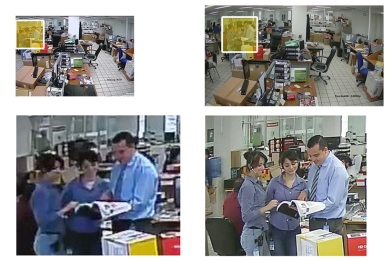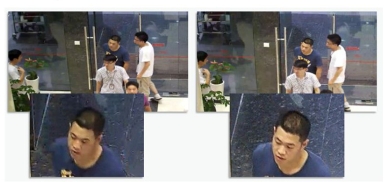ROI (Region of Interest)
IP cameras in default mode provide uniform compression of the entire image, set at the same level. It means that the data transfer rate for the camera is set for the entire scene. However, some regions are useless for the purpose of monitoring. Blue sky or lawn are usually not important, yet they take up bandwidth and storage space. |
ROI (Region of Interest) in IP cameras allows to focus on providing the highest quality image for a selected region only. The remaining part of the image, outside the region of interest is recorded at lower quality or not recorded at all. If the camera records a scene with regions of higher and lower importance, the compression can be focused on the regions of interest only. ROI allows to select regions which should be recorded by the camera with the highest quality available. |
Fig. 1. Example images with ROI disabled (left) and enabled (right) |
|
The screenshots show the results of using ROI technology (right). At a first glance, there is no difference between both images. A detailed look shows that the quality of selected regions is significantly higher. |
Selecting the regions of interest also affects compression. Use of this technology with even the slightest difference in quality may significantly reduce the data transfer rates of a specific camera and improve playback quality. |
In Dahua cameras, ROI may not be compatible with intelligent encoding H.264+ and H.265+, since SMART codecs use dynamic ROIs. The technology can be used in all cases, where the user selects a region in which the recording quality is a priority. If the data transfer rate of the camera is not sufficient, the quality of the image outside ROI will be reduced first. ROI is a priority - and its quality will always be higher than the other parts of the image. |
ROI applications include: |
ROI configuration is very simple. It is set directly at the IP camera and the settings can be found in the video stream parameters section. Depending on the camera model, up to 4 ROIs can be set. In some models, user can also set the image quality which affects the compression level of other regions (reduced quality). |
Fig. 2. ROI configuration – Hikvision IP camera |
ROI is currently available in high-end cameras. However, due to constant development of the video monitoring technology, we can expect it to be available in low-end cameras in the nearest future. |
This technology can best be used with low bandwidth speeds or with limited storage capacity. Recording images at 1080p or higher resolution requires high bandwidth usage and high storage capacity. |








